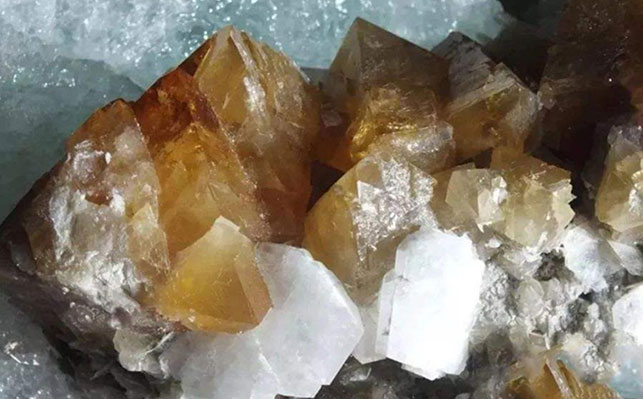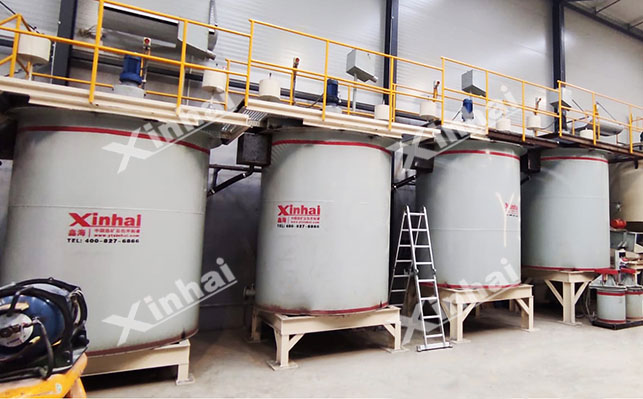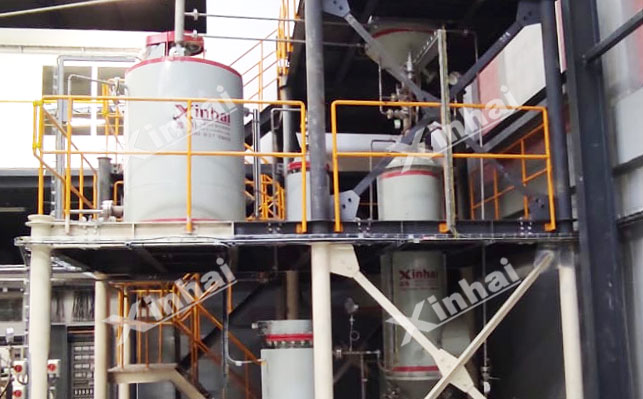
15311826613
Click to add WeChatThe main purpose of scheelite leaching process is to try to reduce the activity of Ga2+ or WO42- in the water phase, so that CaWO4 gradually migrates to the dissolution direction. There are two main types of applicable scheelite leaching processes: one is to convert Ga2+ in scheelite into calcium salt with lower solubility and enter the solid phase, and convert WO42- into soluble tungstate and enter the liquid phase; the other is to convert Ga2+ in CaWO4 into soluble calcium salt and enter the liquid phase, and convert WO42- into tungstate with lower solubility and enter the solid phase. Common leaching processes include alkaline leaching and acid leaching. Let’s learn about them together!

The scheelite alkaline leaching process is based on the overshoot of generating insoluble calcium salts. During the process, scheelite reacts with an alkaline leaching reagent aqueous solution containing An-, so that Ga2+ is converted into insoluble calcium salts and enters the solid phase, and WO42- enters the soluble liquid phase, in which impurities such as iron and manganese enter the solid phase in the form of insoluble salts, realizing separation from tungsten. At present, the commonly used leaching reagents in the alkaline leaching process are Na2CO3 and NaOH.

The Na2CO3 high pressure leaching method is suitable for treating scheelite concentrate and mixed scheelite ore, and is one of the commonly used leaching methods for scheelite. This method uses Na2CO3 reagent to complete leaching in an autoclave, allowing scheelite to react with sodium carbonate solution. The general reaction temperature is 190~230℃, and the corresponding pressure is 1.2~2.6MPa. This method has strong adaptability to tungsten mineral raw materials and high leaching rate. However, the concentration of this method should not be too high, otherwise it will lead to the abnormal phenomenon of reduced leaching rate.
The NaOH leaching method is to convert WO3 in tungsten minerals into Na2WO4 and enter the aqueous solution, while calcium enters the slag phase in the form of insoluble Ca(OH)2 and is separated from tungsten. There are several methods, including alkaline pressure cooking leaching, hot ball milling-alkaline leaching, and reactive extrusion-alkaline leaching.
Alkali pressure leaching: is to use NaOH to leach scheelite under high temperature and alkalinity conditions, but it is not suitable for treating low-grade tungsten medium ore with WO3 content less than 20%, mainly because semi-raw gangue minerals such as quartz, apatite and pyroxene will consume a large amount of alkaline reagents.
Hot ball milling-alkali leaching: is to add tungsten mineral raw materials and NaOH solution into a hot ball mill reactor, control the appropriate temperature, and leaching while grinding.
Reaction extrusion-alkali leaching: The reaction extrusion in this method uses a screw extruder as a continuous reactor, and uses the high-speed rotating screw in the barrel to provide shear and stirring for high-viscosity materials. It can not only improve the surface of the material in time and make the material well mixed, but also produce a strong mechanical activation effect on the high-viscosity material, and improve the reaction activity of the material.
The scheelite acid leaching process is an important method for treating scheelite concentrate (low content of black tungsten, phosphorus, arsenic, etc.). Due to its serious environmental pollution, it has been eliminated by scheelite concentrate beneficiation, but it has a certain effect when treating certain special materials or intermediate products. The commonly used processes for scheelite acid leaching are hydrochloric acid (HC1) leaching and nitric acid (HNO3) leaching.

Scheelite hydrochloric acid leaching process requires fine particle size of concentrate, and a large amount of hydrochloric acid solution is used at high temperature to obtain a more ideal leaching effect. It is mainly suitable for processing high-grade, low-impurity high-quality scheelite, and is not suitable for wolframite, scheelite with high impurity content, and mixed concentrate of black and white tungsten.
Nitric acid has strong oxidizing properties and has a certain oxidizing effect on the reducing components in tungsten minerals. It can also remove some flotation reagents remaining on the surface of tungsten minerals. Excess acidic wastewater can also be made into nitrogen fertilizer after treatment, and the leaching process has relatively low requirements for equipment corrosion resistance.
However, nitric acid (HNO3) leaching, like hydrochloric acid (HC1) leaching, has poor adaptability to tungsten mineral raw materials and strict requirements on the impurity content in the raw materials.
In addition to the above-mentioned conventional scheelite leaching processes, there are also some leaching processes based on the generation of stable coordination compounds of calcium and based on the generation of stable tungsten in acidic solutions. No matter which process is used, it cannot be chosen blindly. If you want to obtain the ideal grade of scheelite concentrate, you need to conduct mineral processing experimental analysis first, and design a suitable scheelite leaching process through analysis to improve the recovery rate of tungsten concentrate.